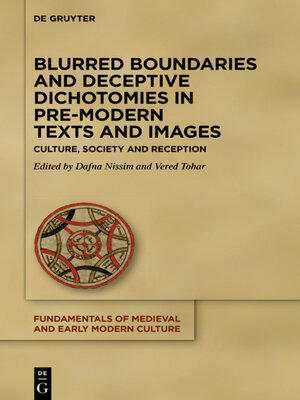Blurred Boundaries and Deceptive Dichotomies in Pre-Modern Texts and Images
ebook ∣ Culture, Society and Reception · Fundamentals of Medieval and Early Modern Culture
By Dafna Nissim

Sign up to save your library
With an OverDrive account, you can save your favorite libraries for at-a-glance information about availability. Find out more about OverDrive accounts.
Find this title in Libby, the library reading app by OverDrive.



Search for a digital library with this title
Title found at these libraries:
| Library Name | Distance |
|---|---|
| Loading... |
This collection of essays focuses on the way blurred boundaries are represented in pre-modern texts and visual art and how they were received and perceived by their audiences: readers, listeners, and viewers. According to the current understanding that opposing cognitive categories that are so common in modern thinking do not apply to pre-modern mentalities, we argue that individuals in medieval and pre-modern societies did not necessarily consider sacred and secular, male and female, real and fictional, and opposing emotions as absolute dichotomies.
The contributors to the present collection examine a wide range of cultural artifacts – literary texts, wall paintings, sculptures, jewelry, manuscript illustrations, and various objects as to what they reflect regarding the dominant perceptual system – the network of beliefs, worldviews, presumptions, values, and norms of viewing/reading/hearing different from modern epistemology strongly predicated on the binary nature of things and people. The essays suggest that analyzing pre-modern cultural works of art or literature in light of reception theory can lead to a better understanding of how those cultural products influenced individuals and impacted their thoughts and actions.







